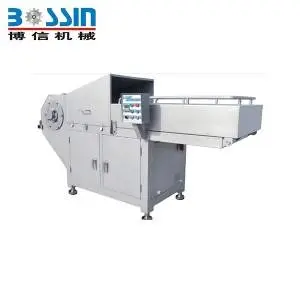Ene . 01, 2025 14:34 Back to list
Equipment for Crafting Sausages in Manufacturing Facilities
The Evolution of Sausage Making A Look at Equipment and Factories
Sausage-making has long been a cherished culinary tradition across different cultures. With roots tracing back thousands of years, the production of sausages has evolved from simple, artisanal methods to sophisticated manufacturing processes seen in modern factories. This transformation largely owes itself to advancements in sausage-making equipment, which have revolutionized the way sausages are produced, ensuring consistency, efficiency, and safety.
The Artisanship of Sausage Making
Historically, small-scale, family-run operations dominated the sausage-making landscape. In these settings, skilled artisans would hand-craft sausages, often employing time-honored techniques passed down through generations. Ingredients were locally sourced, and the process was deeply connected to seasonal changes and regional flavors.
However, as global demand for sausages grew, particularly in the wake of industrialization, the limitations of artisanal methods became apparent. Meeting consumer demands for quantity, variety, and quality necessitated the rise of factories equipped with advanced machinery. This shift marked a significant turning point in the sausage-making industry.
Modern Sausage-Making Equipment
The progression from manual labor to mechanization introduced a range of specialized equipment designed to streamline the sausage-making process. Some of the essential machines found in modern sausage-making facilities include
1. Meat Grinders Modern meat grinders are capable of processing large quantities of meat quickly and efficiently, ensuring a consistent grind that is crucial for the texture of the sausage.
2. Mixers After grinding, the meat is mixed with spices, curing agents, and other ingredients. Industrial mixers, often equipped with temperature control, allow for homogenous blending, which is vital for flavor consistency.
3. Stuffers Sausage stuffers automate the process of filling casings with mixtures of meat and spices. These machines help achieve uniform size and shape, reducing waste and improving the visual appeal of the final product.
4. Smokehouses For many sausages, smoking is an essential step. Modern smokehouses can control temperature and humidity, allowing for optimal smoking times that enhance flavor while adhering to food safety standards.
sausage making equipment factories

5. Slicing and Packaging Machines Once sausages are cooked and cooled, they require precise slicing and packaging. High-speed slicers and vacuum packaging technologies ensure freshness and prolong shelf life.
6. Quality Control Equipment With the growing emphasis on food safety, modern sausage factories incorporate advanced quality control systems. This includes inline inspection devices that check for quality, weight, and compliance with food safety regulations.
The Shift Towards Automation
Automation has been a game-changer in the sausage-making industry. By incorporating computer-controlled systems for monitoring production processes, factories can maintain high standards of quality and safety. This shift has led to increased production rates and reduced labor costs.
Additionally, automated systems can quickly respond to quality variations, ensuring that every batch meets the required specifications. This is particularly significant for manufacturers catering to international markets, where compliance with stringent food safety regulations is crucial.
Sustainability and Future Trends
With the global push for sustainability, sausage-making equipment manufacturers are also focusing on eco-friendly practices. Innovations in equipment design are aimed at reducing energy consumption, minimizing waste, and utilizing sustainable materials. The trend toward plant-based sausages is driving equipment manufacturers to develop new technologies tailored for these emerging products.
Moreover, utilizing data analytics in production processes allows factories to optimize their operations further. Real-time data collection can enhance efficiency, reduce waste, and improve the overall quality of the products.
Conclusion
The evolution of sausage-making equipment has transformed this age-old tradition into a modern manufacturing marvel. From early artisanal methods to today’s high-tech factories, sausage production has embraced innovation while maintaining a connection to its cultural roots. As the industry continues to adapt to consumer demands and sustainability challenges, the role of advanced machinery will undoubtedly become increasingly vital. The future of sausage-making promises not only efficiency and safety but also a renewed commitment to quality and taste, ensuring that this culinary delight remains a staple in kitchens around the world.
Latest news
-
Sausage Link Cutter JC999-03: Precise, Efficient Production
NewsAug.19,2025
-
Pneumatic Clipping Machine - Shijiazhuang Bossin Machinery Equipment Co., Ltd.|Streamline Sausage Production&Seamless Integration
NewsAug.18,2025
-
Pneumatic Clipping Machine-SHJZ Bossin|Sausage Production, Food Processing
NewsAug.18,2025
-
Pneumatic Clipping Machine-SHJZ Bossin|Sausage Production Line&Automated Clipping
NewsAug.18,2025
-
High Speed Filler-Linker-Hanger Line for Efficient Production
NewsAug.18,2025
-
Pneumatic Clipping Machine-Shijiazhuang Bossin Machinery|Sausage Production Line, Small Meat Shop Equipment
NewsAug.17,2025
